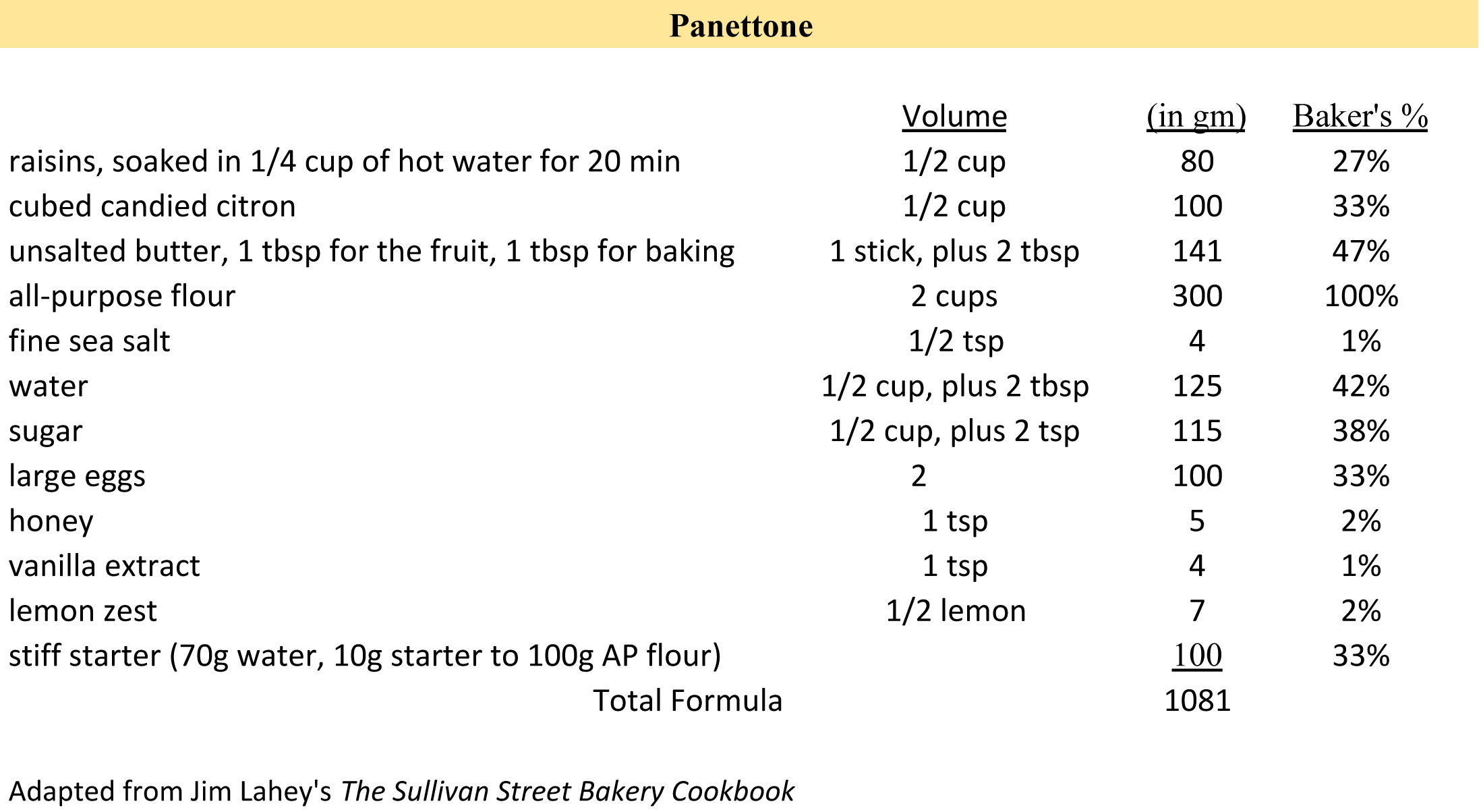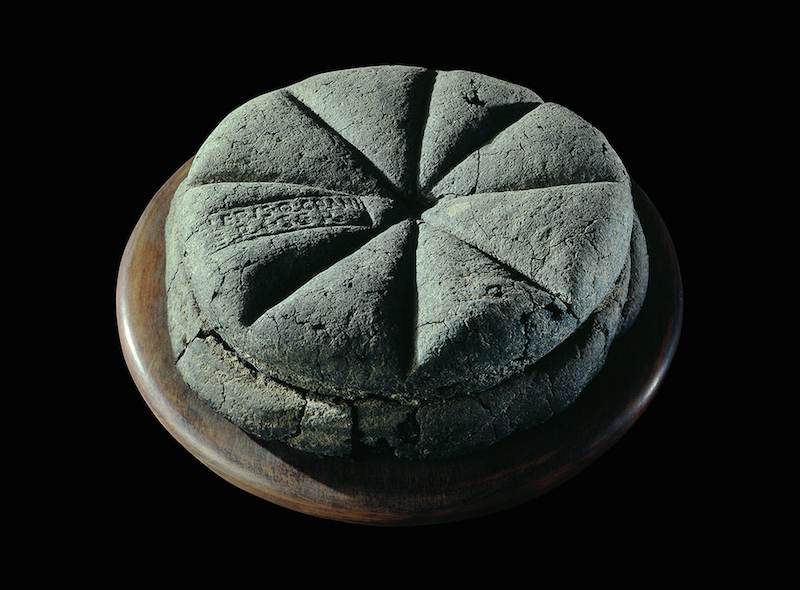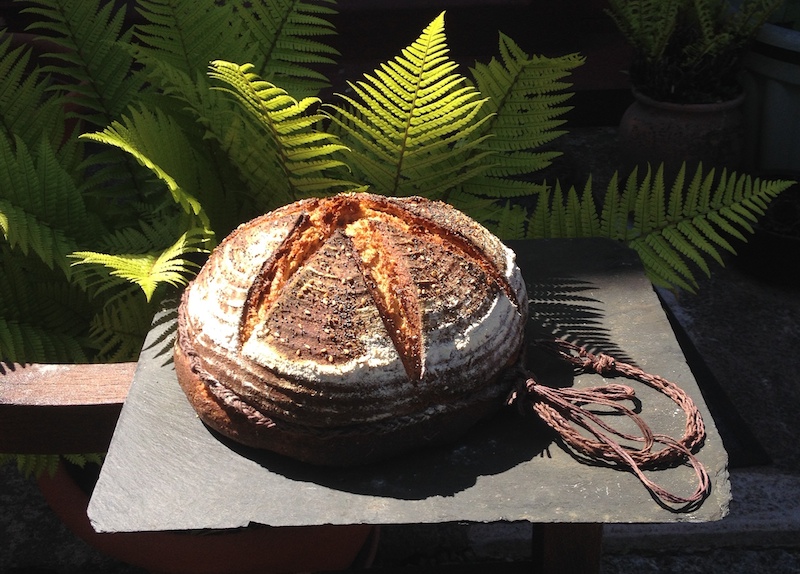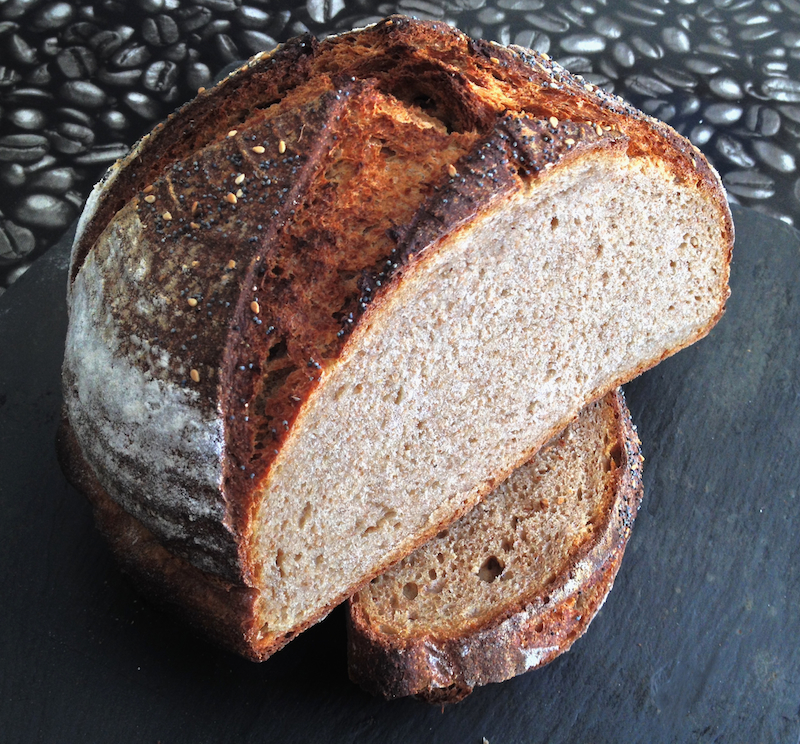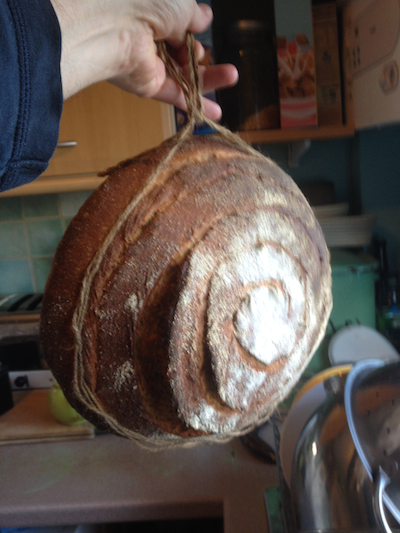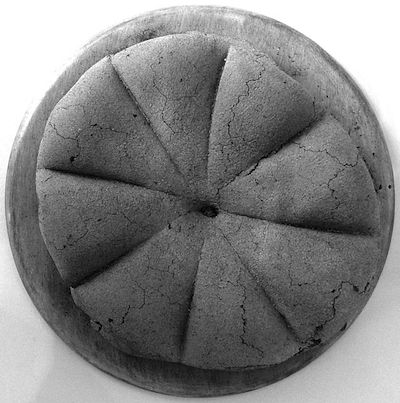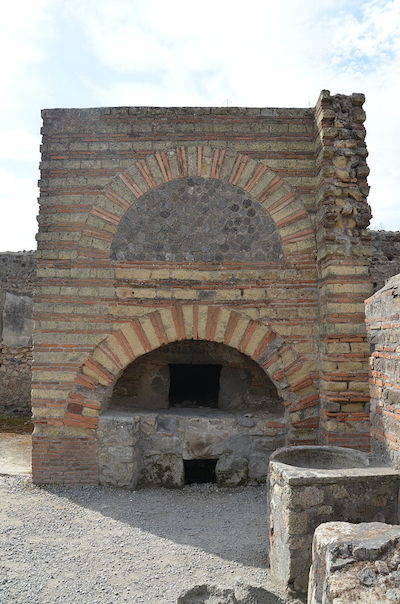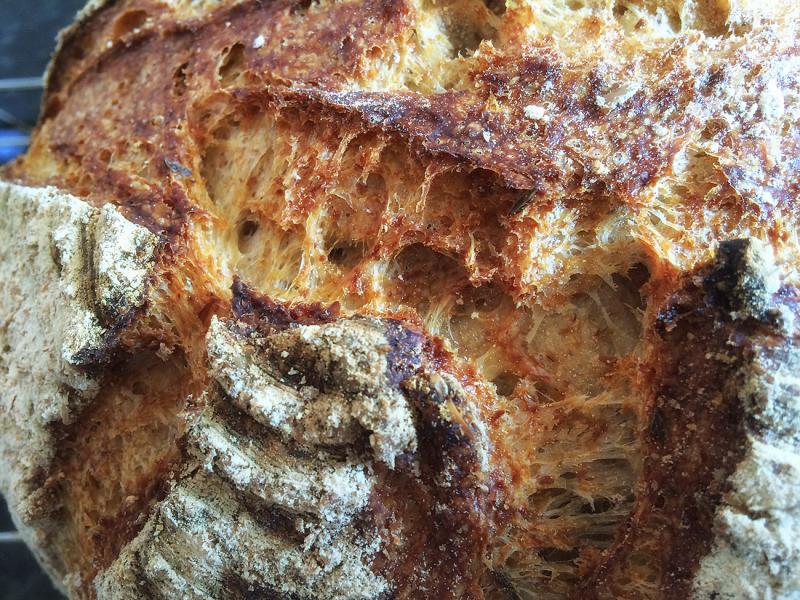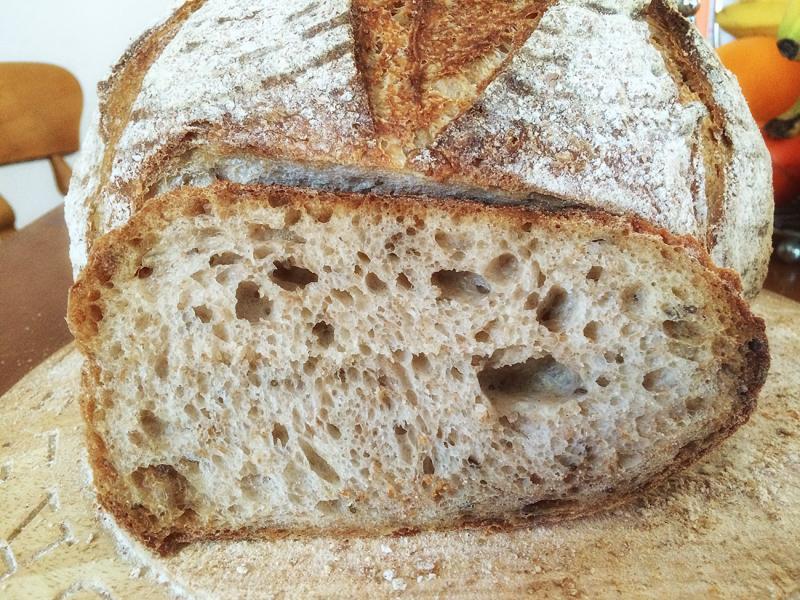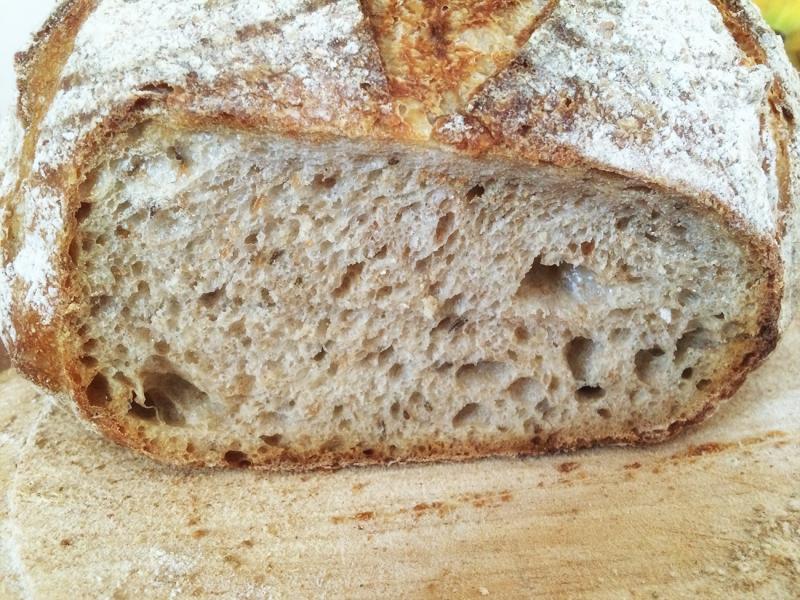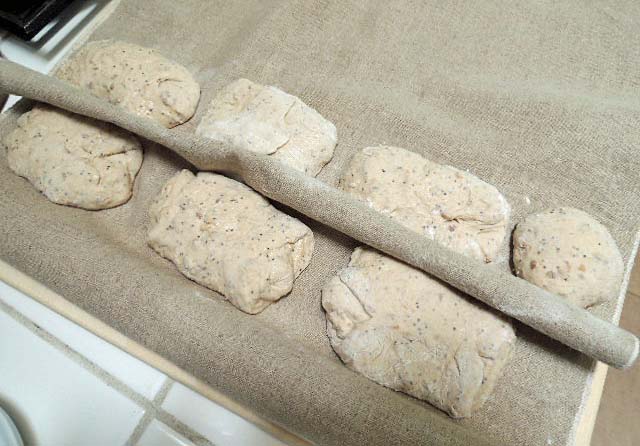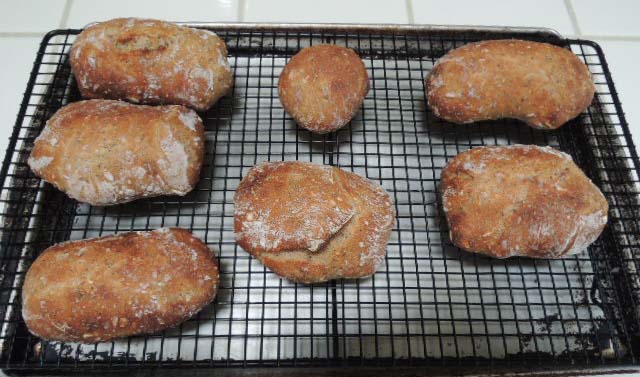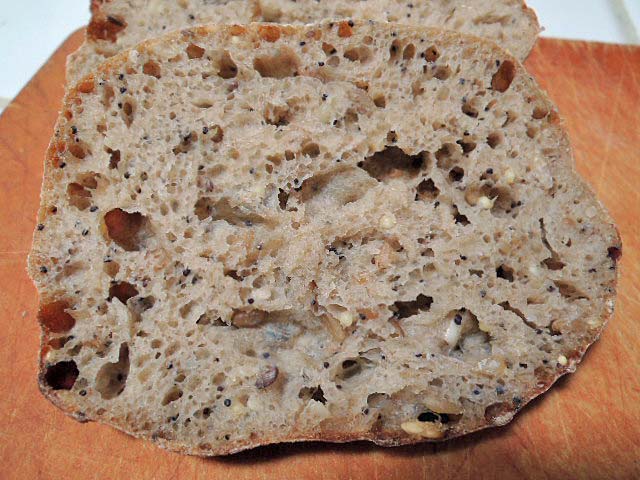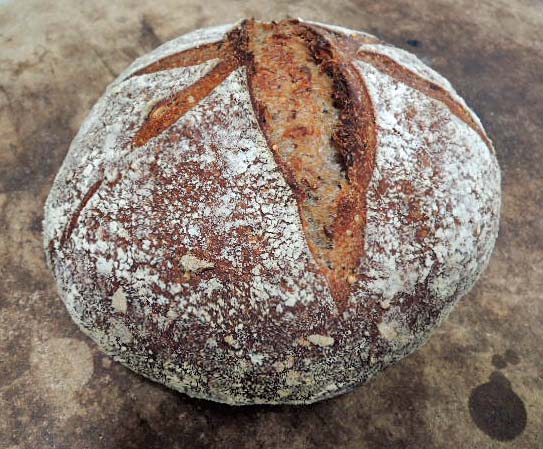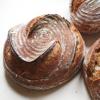This post is in honor of the current community bake featuring Jeffrey Hamelman’s Swiss Farmhouse Bread. The process begins with soaking raisins in water for 5 to 6 days to create the natural leavening for this bread. Essentially, the long raisin soak is making wine, but from rehydrated dried grapes instead of fresh. Just the first stage of wine fermentation, though. Being higher in natural sugars than most other fruits, grapes are particularly suited to winemaking. But making wine is very different from making sourdough in both the species that are initially present in the raw materials – grapes versus grains – and how their cultures develop over time.
Grape skins, like the bran covering on grains, provide a natural biofilm of microorganisms, most of which have names quite foreign in the baking world. Two of them – Kloeckera and Hanseniaspora – together account for 50-70% of the yeast, with the balance made up of a variety of other genera – Candida, Metschnikowia, Cryptococcus, Pichia, Kluyveromyces, Hansenula... In wine lingo, these flora are collectively referred to as the non-Saccharomyces yeasts. Indigenous strains of our old friend Saccharomyces cerevisiae are also present, but in very low numbers by comparison. And yet, S. cerevisiae is by far the most important.
In the beginning of a typical wild fermentation, non-Saccharomyces yeasts take off. Their initial flush is short-lived, however, and after about the first two to four days of fermentation, they start dying. They require more vitamins than S. cerevisiae, and vitamins are in limited supply; they are less tolerant of alcohol than S. cerevisiae, and S. cerevisiae is a more prolific producer of alcohol; they have a slower growth rate at typical fermentation temperatures than S. cerevisiae, and so are less competitive. In other words, Saccharomyces cerevisiae is just all-around tougher and less demanding. It is a better contender over the long haul, and so it rises valiantly to the top.
Growth Pattern During Alcoholic Fermentation by Species Naturally Present on Grapes

Note the time line. At four to five days, the Saccharomyces population reaches its maximum, while other yeasts are dropping like flies. Temperature plays an important part in indigenous wine fermentations. Fastest yeast growth and fermentation occur at 77-86ºF (25-30ºC) with a general pattern following the one shown here. Below 68ºF (20ºC), the non-Saccharomyces yeasts don't necessarily die off. Their rate of growth is faster than S. cerevisiae at the lower temperatures and their tolerance to ethanol is increased, so their populations may remain high to the end.
Now take a look at lactic acid bacteria (the orange line). They drop to their lowest numbers after about five days (less than 10/ml), which explains absence of acidity in the bread. Oenococcus oeni is a species of lactic acid bacteria unique to wine ecosystems, and depending upon pH, may be the only one involved. It is the primary agent in malolactic fermentation later in the winemaking process. But lactic acid bacteria don’t take off until about two to three weeks after alcoholic fermentation is complete, giving us a nice window of opportunity to leaven bread without their interference.
While fermented raisin juice provides natural leavening, being primarily Saccharomyces cerevisiae without lactic acid bacteria, clearly it isn’t sourdough. This is the wild counterpart to bakers’ yeast. You may be wondering, "So why bother fermenting raisins if you end up with the same species?" I think you’ll know the answer the first time you bake a loaf for yourself. Wines produced by wild, mixed fermentations have the potential for more complex and interesting aromas and flavors, even if less predictable than those induced by commercial monocultures. And so it seems just as true for breads leavened by them. The fragrance that filled my house the first time I baked this bread had a richness and intensity I had never experienced in a lean bread before, the foretelling of wonderful flavor.
What it Looks Like in Action
Your timeline might be a little different than this, although you should see bubbling within 48-72 hours if it's working. As always, with variable live cultures, variable ingredients and variable conditions, results will vary.
Day 1
Initially, raisins sink in water and start out on the bottom. Some air bubbles may get trapped in the wrinkles.

Day 2
As they absorb water and swell, raisins expand and appear to be suspended throughout the watery raisin juice, although still underneath the surface.

Day 3
You'll know fermentation is underway when active bubbling becomes evident. The liquid will turn cloudy with yeast, and the raisins migrate upward as they become gassy.

Day 4
As fermentation progresses, the raisins become more buoyant, floating higher in the liquid (above the surface). Excess yeast cells settle in an increasing layer of sediment on the bottom.
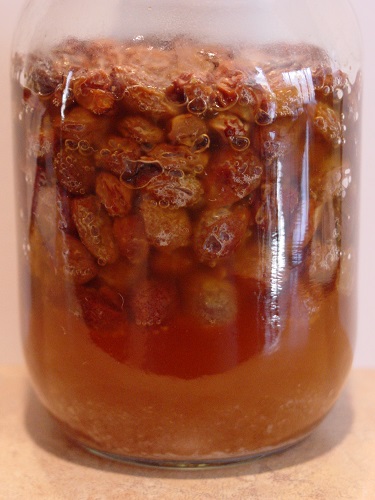
to be continued ...















